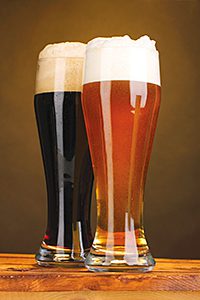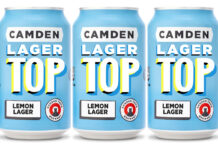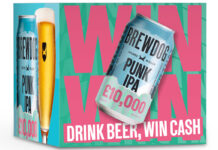Premium lagers once swept all before them but now standard-strength brews, ciders and ales are biting back

PREMIUM lager, once the fast growing darling of the long drinks scene, is under threat.
According to a Key Note Market Report into premium lagers, beers and ciders, lager brewers have been busy downsizing to standard-strength versions of the premium brands, and the former Cinderella category of ales and stouts has also been creeping up on premium lager (defined by Key Note as having an ABV of 4.5% or more).
The total market for premium lager dropped from £10.25bn in 2008 to £10.175bn in 2012. In the same period premium ales and stouts (those in the same ABV range) grew from £3.175bn to £3.625bn. Premium ciders (with an ABV of more than 6%) fluctuated over the same period, starting at £350m in 2008, rising to £360m in 2009 and dropping to £335m by 2012.
The overall market across all three categories grew 2.6% between 2008 and 2012, bringing the total value to an estimated £14.14bn. That was boosted by the craze for craft beers and the generally steady performance of cider. However this category is susceptible to health concerns as well as changes in socio-economic trends and fashion, as a further dig into the figures shows.
Key Note’s research identifies several factors shaping sales. Standard strength lagers such as established brands like Tennent’s, Carling and Foster’s and the newer standard-strength products from the premium brand owners themselves, such as Beck’s Vier and Stella Artois 4% as well as niche dark beers and craft brews appealing to customers looking for flavour, artisanship and provenance, are providing more competition than before.
It’s a complex marketplace, with everyone from international brands produced by multinationals to tiny boutique breweries supplying a few nearby outlets. Heineken UK is said to dominate the premium scene, with 32% of the total market. The four largest multinationals had more than 85% of the total market in 2012.
Who buys what? That is not easy to untangle, with differences across regions, ages and especially the gender of the drinker. Throughout the whole market, penetration of canned and bottled lager dropped between 2008 and 2012. Canned ales and stouts were also down but bottled ales showed a slight uplift.
Women remain the huge untapped market for lager and, especially, ales and stouts. Key Note quotes figures that show women account for only 17% of UK beer sales, with almost four out of five rarely or never drinking the stuff. Recent attempts to persuade women into the category, which had included producing specifically female-friendly brews appear to have failed. Molson Coors launched Animée last year, with pastel colours and fruit flavours. Sales were disappointing, the report said.

However Key Note quotes a report from English brewer Hall & Woodhouse that found the number of women drinking ale doubled between 2008 and 2012. They quote beer writer Marverine Cole as saying that the idea of a “beer designed for women” is “nonsense” and says that women have a wide range of tastes when it comes to beer.
“In my personal opinion,” Cole said, “the premise and wide generalisation that women only like low ABV, golden ales that are less hoppy in terms of bitterness is not entirely true.”
What prompts customers buy lager and beer to consume at home? The Key Note researchers found that drinking with friends was the most popular reason, given by a quarter of respondents.
But the recession and health concerns have lead to a long-term reduction in the amount people are drinking. According to an NHS survey, in 1998 75% of men and 59% of women had drunk alcohol in the week before the interview. By 2010, the figures were 68% and 54%.
For the future, Key Note predicts “slow and limited” growth. If the microbrewery and craft beer trend continues – and Key Note thinks it might already be at saturation point – the report predicts that the major players will move into the sector.

£10.2bn
Value of premium lager in all UK markets in 2012
£3.6bn
Value of premium ales and stouts in all UK markets in 2012
£50.3m
Main media advertising expenditure on lagers 2012
£12.7m
Main media advertising expenditure on ales and stouts 2012
Key Note Premium Lagers, Beers & Ciders Market Report 2013. £575.
More information www.keynote.co.uk













